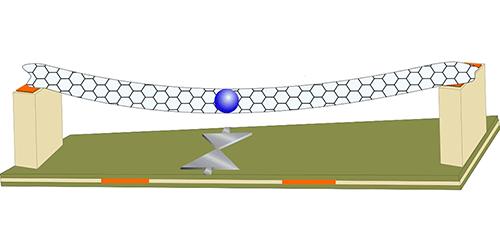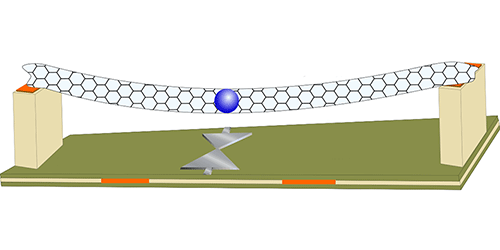Quantum States Made with a Pluck
Vibrational quanta might one day be used to make ultraprecise force and mass sensors, or to connect distant quantum bits (qubits) in a solid. A theoretical proposal now shows a way to produce such quanta electrically. The idea, from Heng Wang and Guido Burkard, at the University of Konstanz, Germany, entails coupling an electron’s spin to the quantized motion of a suspended carbon nanotube (CNT), which can vibrate like a plucked guitar string.
The theorists considered a CNT stretched over a semiconductor “trench,” with its voltage set to trap exactly one excess electron on the CNT. They introduced a magnetic field from a micromagnet to separate the energy of the “up” and “down” states of the electron’s spin, thus forming a qubit. In this configuration, the qubit can transfer its energy to a vibrational (phonon) state of the CNT because of the so-called spin-orbit effect.
Starting with a composite state in which the spin is “down” and no vibrational quanta are excited, the authors showed that performing three operations can create any phonon state with a specific number of quanta, known as a Fock state, as well as superpositions of these states. The operations are a spin flip, an energy swap (between the qubit and the CNT’s motion), and a phase shift of the qubit, all of which can be accomplished with a combination of an ac electric field and the micromagnet’s magnetic field. In simulations of this scheme, the authors also determined how the “quality factor” of the CNT motion affects the precision with which Fock states can be generated.
This research is published in Physical Review B.
–Jessica Thomas
Jessica Thomas is the Editor of Physics.





